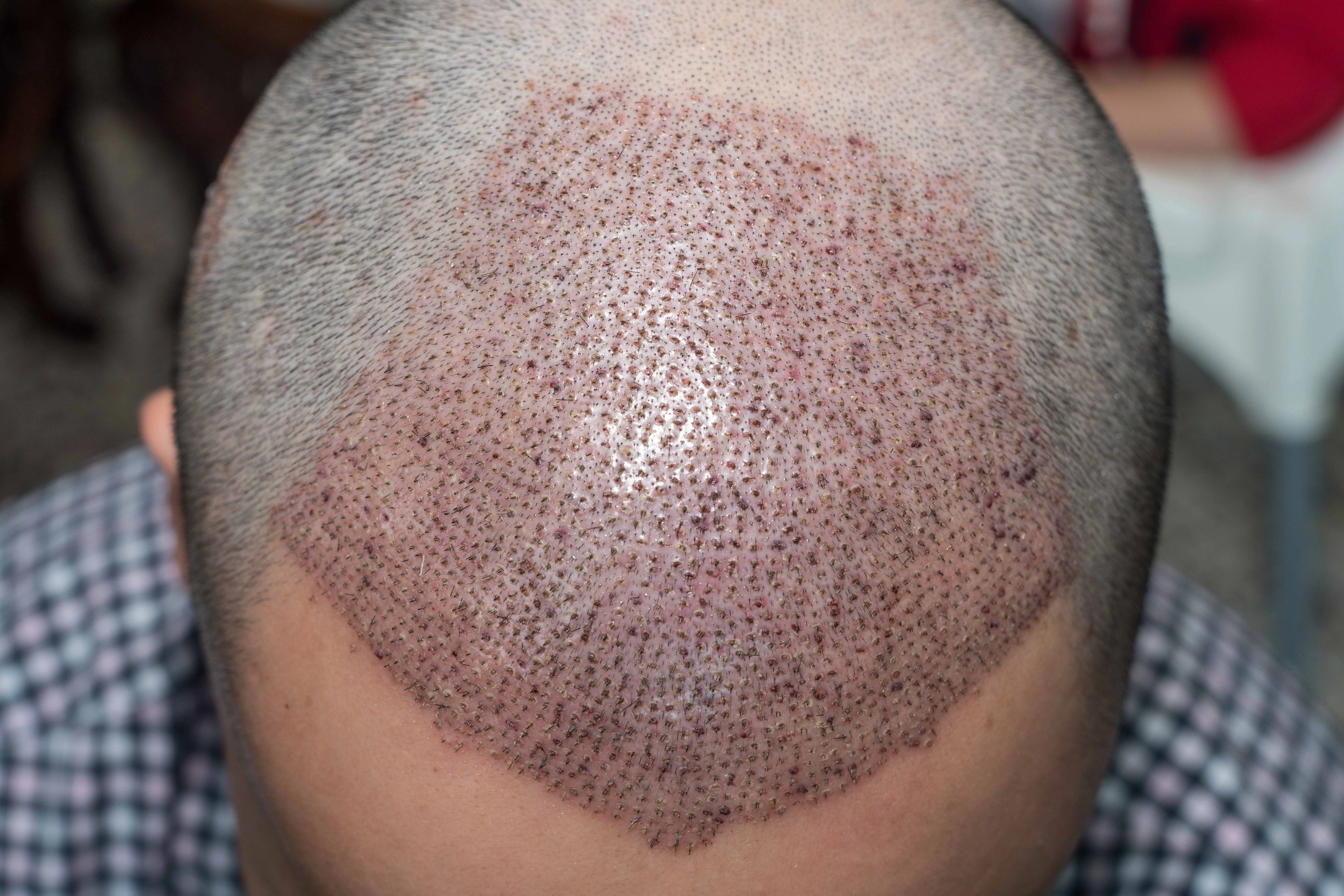
The Growing Role of Body Hair in Hair Transplantation
Hair loss is a common concern affecting both men and women globally. While hair transplantation has been a popular solution for restoring hair on the scalp, traditional methods primarily relied on harvesting hair from the scalp itself.
Hair loss is a common concern affecting both men and women globally. While hair transplantation has been a popular solution for restoring hair on the scalp, traditional methods primarily relied on harvesting hair from the scalp itself. However, with the evolving field of hair restoration, a groundbreaking trend has emerged – Body Hair Transplantation (BHT). This innovative technique involves harvesting hair from various parts of the body and transplanting it onto the scalp. In this article, we will explore the evolving trends in Body Hair Transplantation, examining its advantages, techniques, and the potential it holds for those seeking effective hair restoration solutions.
I. The Evolution of Hair Transplantation
Traditional hair transplantation methods, such as Follicular Unit Transplantation (FUT) and Follicular Unit Extraction (FUE), focused primarily on extracting hair follicles from the donor area on the scalp itself. These methods have proven successful for many patients, but limitations exist, particularly in cases where the donor area lacks sufficient hair follicles or experiences scarring.
The advent of Body Hair Transplantation has broadened the scope of hair restoration by introducing alternative donor areas beyond the scalp. Body hair, particularly from the beard, chest, back, and other areas, has become a valuable resource for transplanting onto the scalp. This development has opened new possibilities for individuals with limited scalp donor hair or scarring from previous procedures.
II. Advantages of Body Hair Transplantation
A. Increased Donor Supply
One of the primary advantages of Body Hair Transplantation is the increased donor supply. Patients with limited donor hair on their scalps can now benefit from the abundance of hair in various areas of the body. This expanded donor pool allows for a more extensive and effective transplantation process, even for individuals with advanced hair loss.
B. Concealing Scarring
For those who have undergone previous hair transplant procedures or surgeries that resulted in scarring on the scalp, Body Hair Transplantation offers a solution. Harvesting hair from different parts of the body helps conceal existing scars and provides an opportunity for successful hair restoration without exacerbating the scars on the scalp.
C. Diverse Hair Types
Body hair often differs in texture and thickness from scalp hair. This diversity allows for a more natural-looking result, as the transplanted hair can closely match the recipient area's pre-existing hair. This advantage is particularly beneficial for achieving a seamless blend between the transplanted and native hair.
III. Techniques in Body Hair Transplantation
A. Beard Hair Transplantation
The beard is a common donor area for Body Hair Transplantation due to its proximity to the scalp and the similarity in hair texture. Beard hair is often thicker and coarser than scalp hair, making it an ideal choice for individuals desiring a fuller and more robust hairline.
B. Chest and Back Hair Transplantation
While chest and back hair may differ in texture from scalp hair, advancements in transplantation techniques have made it possible to successfully harvest and transplant these hair types onto the scalp. The use of finer body hair for certain regions of the scalp can create a natural-looking density.
C. Leg and Arm Hair Transplantation
In cases where other body areas may not provide sufficient donor hair, leg and arm hair can be considered. These areas are characterized by finer hair, and while they may not be the first choice for transplantation, they can contribute to enhancing overall density and coverage.
IV. Patient Selection and Expectations
While Body Hair Transplantation offers a promising solution for many, not all patients are suitable candidates. The success of the procedure depends on factors such as the quality of body hair, the patient's overall health, and realistic expectations. During the consultation process, a qualified hair transplant surgeon assesses these factors to determine the feasibility and potential outcomes of Body Hair Transplantation for each individual.
Patients considering this procedure should have a clear understanding of the differences between body and scalp hair, as well as the limitations associated with transplanting hair from various body areas. Realistic expectations regarding the final results, including potential variations in hair texture and growth, are crucial for patient satisfaction.
V. Challenges and Considerations
Despite the promising results and advancements in Body Hair Transplantation, several challenges and considerations exist. These include:
A. Variability in Hair Characteristics
Body hair can vary significantly in terms of texture, color, and growth patterns. Transplanted body hair may not always perfectly match the recipient area, requiring careful consideration during the planning and execution of the procedure.
B. Limited Graft Survival
Body hair grafts may have a lower survival rate compared to scalp hair grafts. The transplantation process involves extracting, handling, and re-implanting hair follicles, and the survival of these follicles is crucial for achieving optimal results. Advances in transplantation techniques and technology aim to improve graft survival rates over time.
C. Longer Recovery Period
Patients undergoing Body Hair Transplantation may experience a slightly longer recovery period compared to traditional methods. The healing process and the growth cycle of transplanted body hair may differ, necessitating patience and commitment from the patient.
VI. Future Directions and Innovations
As the field of hair restoration continues to evolve, ongoing research and technological advancements are likely to address the challenges associated with Body Hair Transplantation. Innovations in harvesting techniques, graft survival rates, and post-transplant care may further enhance the effectiveness and popularity of this procedure.
A. Improved Graft Survival
Researchers are exploring ways to improve the survival rate of transplanted body hair follicles. This includes refining extraction methods, optimizing storage conditions, and employing advanced technologies to ensure the viability of grafts during and after transplantation.
B. Enhanced Patient Experience
Advancements in anesthesia, minimally invasive techniques, and post-operative care aim to enhance the overall patient experience. Reduced discomfort, faster recovery times, and improved aesthetic outcomes contribute to making Body Hair Transplantation an increasingly attractive option for individuals seeking hair restoration.
C. Personalized Treatment Plans
The future of Body Hair Transplantation lies in the development of personalized treatment plans based on each patient's unique characteristics. Tailored approaches, including a combination of scalp and body hair transplantation, may become more common to address individual needs and optimize results.
VII. Patient Testimonials and Case Studies
Including real-life experiences and case studies can add a personal touch to the article. Sharing success stories, challenges faced, and before-and-after images can provide readers with a more comprehensive understanding of the potential outcomes of body hair transplantation.
VIII. Ethical Considerations and Responsible Practices
Discussing the ethical considerations of body hair transplantation is essential. Touch upon the importance of selecting qualified surgeons, ethical practices in donor hair extraction, and the need for informed consent. Emphasize the significance of transparent communication between patients and surgeons regarding expectations and potential limitations.
IX. Global Trends and Adoption
Explore the global landscape of body hair transplantation. Discuss trends in different regions, variations in techniques, and the overall adoption rate. Understanding how this practice is evolving on a global scale can offer valuable insights into its acceptance and effectiveness.
X. Cost Considerations and Accessibility
Addressing the financial aspect of body hair transplantation is crucial. Discuss the cost implications, factors influencing pricing, and whether insurance covers any part of the procedure. Additionally, touch upon the accessibility of this procedure in different regions and how it might evolve in terms of affordability.
XI. Comparative Analysis with Traditional Methods
Provide a comparative analysis between body hair transplantation and traditional methods like FUT and FUE. Highlight the pros and cons of each approach, considering factors such as recovery time, graft survival rates, and overall patient satisfaction. This can help readers make informed decisions based on their individual needs.
XII. Expert Opinions and Interviews
Include insights from reputable experts in the field. Conducting interviews with experienced hair transplant surgeons, dermatologists, or researchers can offer a well-rounded perspective on the current state and future prospects of body hair transplantation.
XIII. Patient Education and Awareness
Promote awareness about the importance of patient education. Discuss the role of educational initiatives in ensuring that potential candidates are well-informed about the procedure, its intricacies, and realistic expectations. Education can empower patients to make informed decisions and actively participate in their own care.
Conclusion
Body Hair Transplantation represents a significant evolution in the field of hair restoration, offering hope and solutions to individuals facing challenges with traditional transplantation methods. The increased donor supply, ability to conceal scarring, and diverse hair types make it a valuable option for a broader range of patients. While challenges and considerations exist, ongoing research and innovations are likely to address these issues, further establishing Body Hair Transplantation as a viable and effective solution for individuals seeking natural-looking hair restoration. As technology advances and personalized treatment plans become more refined, the future of Body Hair Transplantation holds promise for continued success and patient satisfaction in the dynamic world of cosmetic surgery. You can connect with renowned surgeons in India effortlessly to seek professional, precise and customized guidance by simply sending an email or a WhatsApp message through our website.


Comments
Login & Write comment